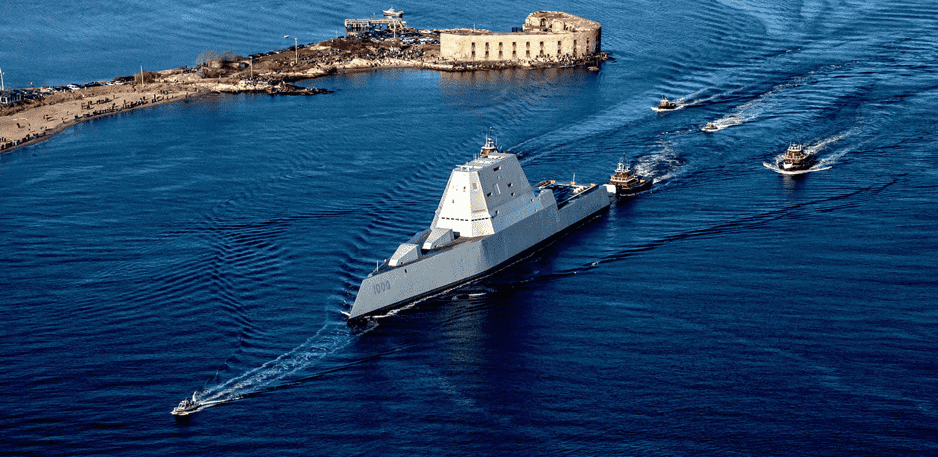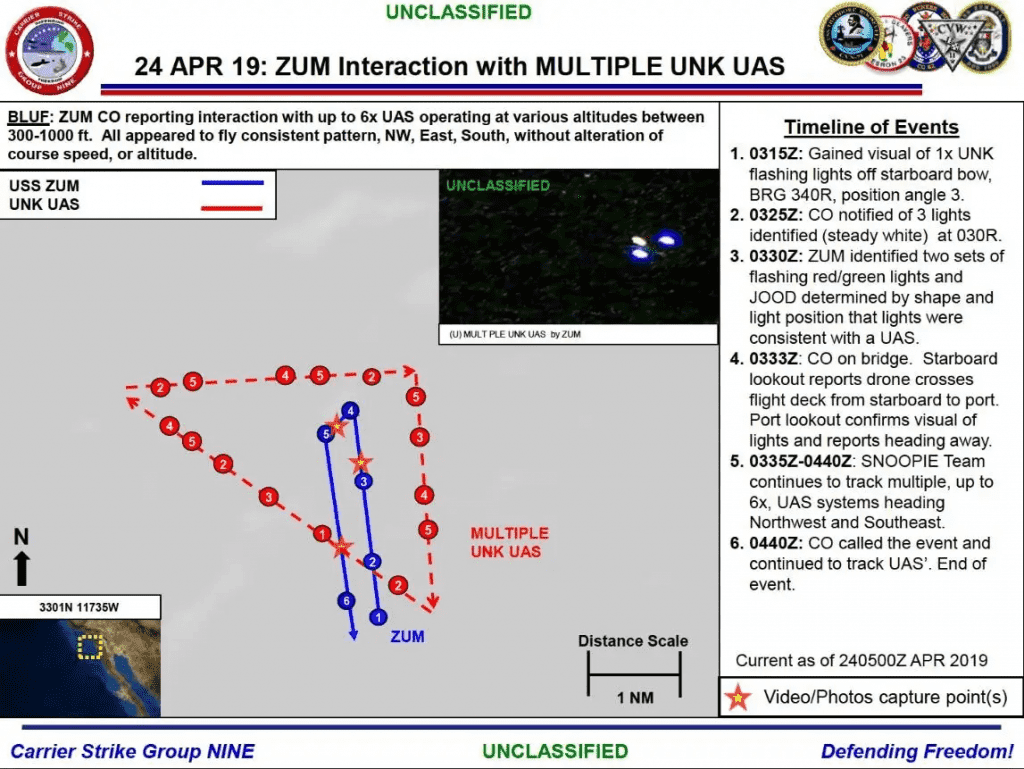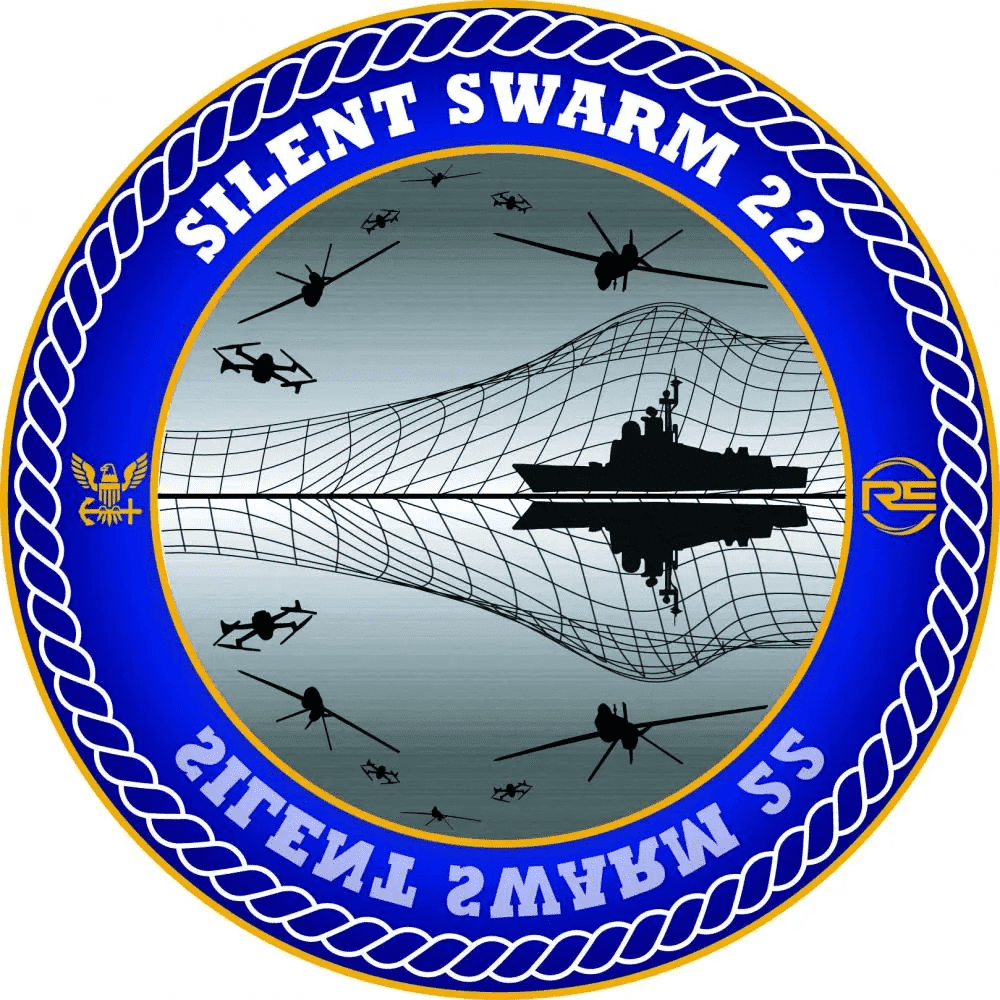A new video from an unfortunate incident of six unidentified drones flying above the USS Zumwalt, the US Navy’s most advanced surface combatant, has surfaced online.
On April 24, 2019, at 8:30 p.m. Pacific Time, the incident took place in international waters 17 nautical miles from Camp Pendleton, home to the Marine Corps. The event occurred while the six detected unidentified unmanned aircraft systems (UAS) were flying between 300 and 1000 feet in the air.
Watch the video below:
Stealth surface combatant USS Zumwalt (DDG-1000) is a one-of-a-kind. The ship is equipped with stealth technology to be more resilient than other destroyers and to enable it to conduct specific missions closer to hostile territory.

The video was captured at night, making thorough analysis challenging. The video’s one distinguishable element is a collection of several lights stacked in a rectangular pattern. The lights appear white and green, and the object’s central red light blinks sporadically. A sailor notices that the UASs don’t seem to be equipped with weapons.
“I’m unable to determine much of the configuration of the aircraft. However, it appears to have four regularly spaced running or navigation lights,” said David Kovar, CEO of URSA Inc. Kovar’s firm specialized in drone security issues.

“Given the context of the narration and the briefing slide, the object could be a multi-rotor, likely a quad, UAV with running lights,” he added.
However, he pointed out that this “assessment is based on a typical configuration of quadcopter lights. And while the video could match other objects, given the lack of detail in the video, it appears consistent with the description of a UAS in the narration and the briefing slide.”
Numerous other noteworthy aspects were provided by a different drone analyst who wished to remain anonymous.
“While the video isn’t of the best quality, I don’t see anything on the drone that would make me think it’s something that couldn’t be purchased off the shelf from a current commercial drone manufacturer.” The analyst said.
“The fact that the narrator said that there was a pattern of flight where there were no changes in altitude tells me that the drones were either programmed to fly a certain route or controlled from a distance while possibly on altitude hold, which to me isn’t the hallmark of any advanced technology,” the analyst added.
“What is interesting is that they reported six drones, and they were 17 miles off the coast of Southern California. This tells me that these drones were likely launched from a boat and that this was a planned ‘mission’ because no one has six drones on a boat for recreational purposes.”
The analyst also noted that “physically capturing the drone is the only way a forensic assessment can be made to determine the origin and capabilities associated with an [unidentified] drone.”
Drone swarms are a general issue of growing concern for the Navy, notwithstanding the unavailability of information on such occurrences. Despite its focus on cutting-edge drone swarm deployment programmes, the Navy is not the only player in this market. Drone swarm occurrences in 2019 demonstrated that important naval assets are under surveillance in their training areas, just miles from American coastlines.

Drone swarms are a real thing. Moreover, the US’s adversaries are openly developing and deploying networked swarms of lower-end drones, which are necessary to prevail in potential maritime confrontations.
The Pentagon has faced an unprecedented challenge in the past few decades due to the difficulty in effectively detecting, monitoring, and fighting drones. It is, in fact, one of the department’s top strategic priorities.
So maybe it is still to be seen how successful the Navy and Department of Defense will be in looking into and handling these incidents at a time when previously advanced drone technology is getting more advanced and widespread.


